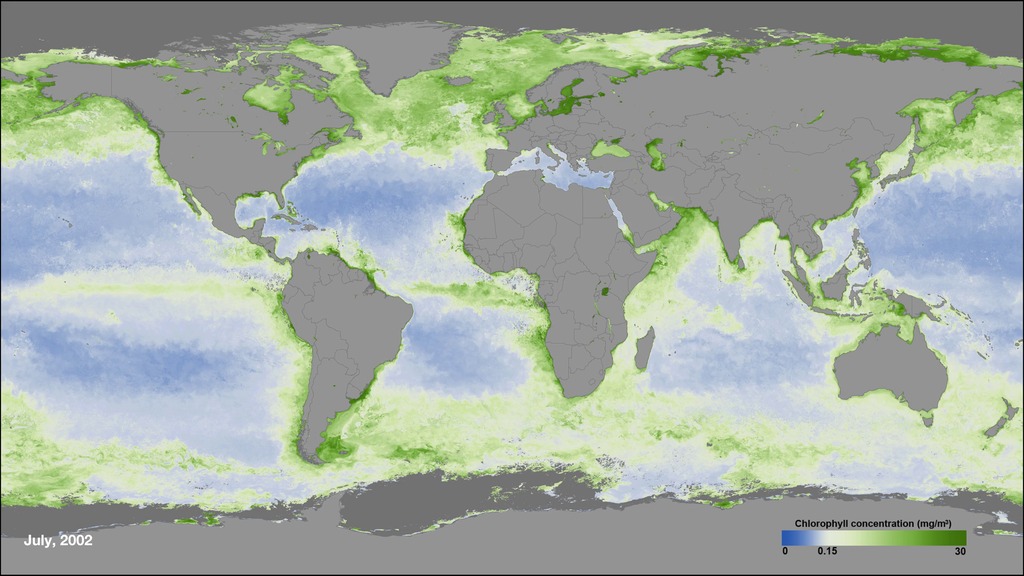How El Niño Impacts Marine Plant Life
El Niño years can have a big impact on the littlest plants in the ocean, and NASA scientists are studying the relationship between the two. Ocean color maps, based on a month’s worth of satellite data, show El Niño’s impact on phytoplankton.
In El Niño years, huge masses of warm water – equivalent to about half of the volume of the Mediterranean Sea – slosh east across the Pacific Ocean towards South America. That mass of warm water puts a lid on the normal currents of cold, deep water that typically rise to the surface along the equator and off the coast of Chile and Peru.
"An El Niño basically stops the normal upwelling," Uz said. "There’s a lot of starvation that happens to the marine food web." These small plants, called phytoplankton, are fish food – without them, fish populations drop, and the fishing industries that many coastal regions depend on can collapse.
In this video, NASA oceanographer Stephanie Uz talks about the impact of El Niño’s warm waters on tiny marine plants called phytoplankton.

Map showing phytoplankton during neutral and El Niño conditions.

Map showing changes in phytoplankton concentrations.
For More Information
Credits
Please give credit for this item to:
NASA's Goddard Space Flight Center
-
Producer
- Sophia Roberts (USRA)
-
Scientist
- Stephanie Uz (Global Science and Technology, Inc.)
-
Science writer
- Kate Ramsayer (Telophase)
-
Videographer
- John Caldwell (Advocates in Manpower Management, Inc.)
Release date
This page was originally published on Monday, April 4, 2016.
This page was last updated on Wednesday, May 3, 2023 at 1:48 PM EDT.

